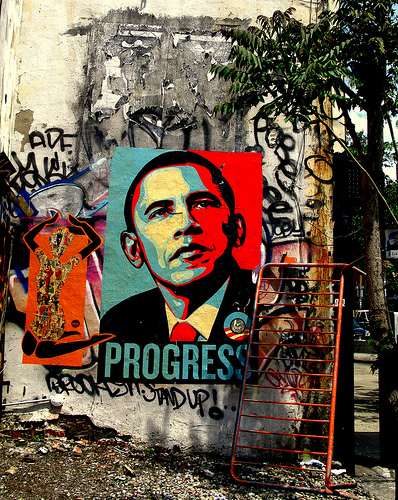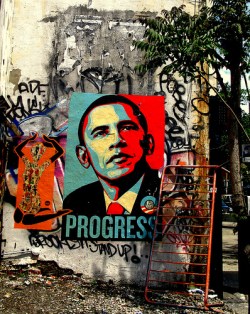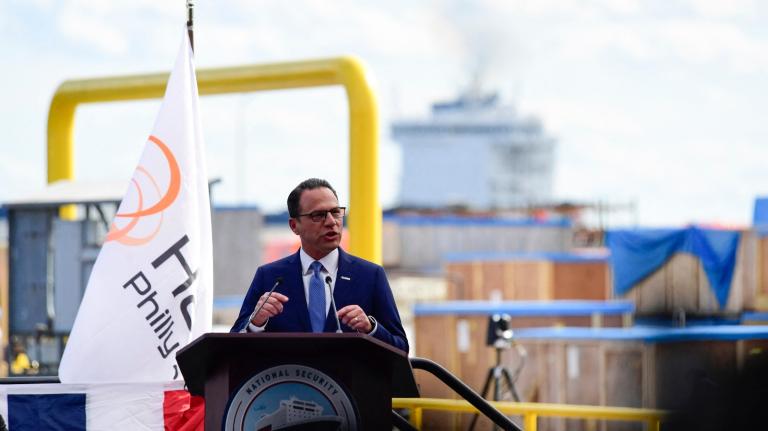It’s safe to say that Barack Obama came to the White House with more street cred than any president in recent memory. As an African American, Obama was certainly privy to the forces of institutional racism that still shackle much of urban America. Before he got into politics, he worked as a civil rights lawyer, and before that, he worked as a community organizer in the mean streets of Chicago. (You will recall that Rudy Giuliani and Sarah Palin took turns mocking him for that last one at the 2008 Republican national convention.) When Obama became president, hopes were high that American cities would finally get a little love from Washington, which had spent fifty-plus years pouring money into the suburbs.
To be fair, with the national economy circling the drain and the suburban housing market disappearing down it, the president has had other things to worry about. Nonetheless, healthy cities are crucial to our economic recovery, and if we’re going to stave off the worst impacts of climate change, we’ll need to get serious about building communities that allow us to shake our dependence on cars. So as the 2012 elections come into view, we thought we’d take a look at Obama’s record on issues specific, if not exclusive, to cities. Later this week, we’ll look at the Republican contenders.
The thumbnail version is this: Under President Obama, key federal agencies have begun to shift away from subsidizing suburban sprawl and toward reviving cities and creating dense, walkable, transit-friendly communities. Obama has put smart-growthers and new urbanists in key positions, begun to realign government agencies to prioritize sustainability, and launched partnerships and initiatives that one Bush administration veteran calls “mind blowing” — in a good way. Even Obama’s allies agree, however, that serious reform may have to wait for a second term. If there is one.
The bigger picture includes a jumble of agencies and acronyms that’ll glaze your eyes and numb your brain. But here’s a quick list of some of the more notable things that Obama has done for cities, followed by a tale that might make you tear your hair out.
- Obama created a special post at the White House for cities. Derek Douglas, a Yale-trained attorney who once worked for the NAACP Legal Defense and Educational Fund, served as the president’s special assistant for urban affairs until he departed recently for a post at the University of Chicago.
- The administration funneled more than $2.6 billion in stimulus money to transportation projects through the so-called TIGER grants. A significant chunk of this money went to transit and “complete streets” projects that benefit bicyclists and pedestrians as well as cars.
- Another stimulus offshoot, the Neighborhood Stabilization Program, sent $7 billion to cities and states to help deal with the aftermath of the housing crisis. The funding allowed cities to repurpose or redevelop abandoned and foreclosed properties.
- Through a pilot program called Strong Cities, Strong Communities, six struggling burgs have received expert help in the form of “fellows” who’ve helped fill understaffed city offices and promote economic revitalization.
Obama’s most farsighted effort — and the one that best illustrates what he’s up against — is the Sustainable Communities Initiative, which brings together the Department of Transportation (DOT), the Department of Housing and Urban Development (HUD), and the Environmental Protection Agency (EPA) to decide where government development dollars are best spent. How sensible, you’re thinking — let’s get the people who build the roads (or train lines or bike lanes) together with those that oversee housing and development policy, and toss in the people charged with making sure that we don’t create a mess of the environment in the process. But this wasn’t happening before.
“Having a real and functioning partnership with HUD and DOT was beyond my wildest dreams,” says Ilana Preuss, who spent seven years in the EPA’s smart growth division under George W. Bush. Preuss, who is now chief of staff at Smart Growth America, says her work received consistent funding during the Bush years, but it wasn’t because of leadership from the top. Bush’s first two EPA chiefs, both former Republican governors — Christine Todd Whitman from New Jersey and Michael Leavitt of Utah — came from states that had strong smart growth policies.
“The major difference now is that [smart growth] is getting White House support, and there is this cross-agency partnership,” Preuss says. “That is a night and day difference.”
Over the past two years, the partnership doled out roughly $200 million in sustainable community grants to promote dense, transit- and pedestrian-friendly development. The 2011 grants helped create a loan fund to build affordable housing and a food distribution hub near public transit in Sacramento, Calif.; fund a revitalization plan for the St. Charles parish in New Orleans; improve access to public transit for low-income residents in Boston; create a sustainable building code for the Kansas City region; and the list goes on. (For a much more detailed description of all this, check out Alyssa Katz’s supergreat story, “Reverse Commute,” in The American Prospect.)
“Cities and metropolitan regions have been working on sustainability and economic prosperity strategies for years,” says Shelley Poticha, a longtime smart growth advocate who spearheads the partnership as director of the HUD’s Office of Sustainable Housing and Communities. “The federal government, until this administration, has either been absent from the discussions or, frankly, in the way. We believe that we ought to be strong partners rather than barriers.”
The sustainable communities grants, and even the TIGER funding, pale in comparison to the money that continues to prop up the suburbs, however. Federal highways, to take an obvious example, scarf down more than $40 billion annually. “There’s a huge amount of federal resources going directly into financing real estate — and we’re not even talking about Fannie Mae and Freddie Mac,” says Preuss. “TIGER and sustainable communities grants are peanuts.”
But even peanuts were too much for the Tea Party, which tried to drown the Sustainable Communities Initiative in the bathtub this winter. In December, Tea Party Republicans in the House zeroed out Poticha’s budget in a 2012 appropriations bill. If they’d had their way, it wouldn’t have stopped there. The house bill would have banned HUD from spending money to support “ill-defined rubrics, such as ‘sustainability,’ ‘livability,’ ‘inclusivity,’ and ‘equity.’”
No, seriously. WTF?
“It’s scary. It’s so ideological,” says Christopher Leinberger, president of Locus, a group of smart-growth-minded developers and investors, and a visiting fellow at the Brookings Institution. “The attitude is that all Americans must drive everywhere, and if you don’t, you’re either a communist or you’re a wuss.”
Backers of the Sustainable Communities program, including Smart Growth America, working with allies in the Senate, managed to restore funding for Poticha’s office, but there is no money in the budget for grants this year. HUD may find some money to keep the grants going, but the agency will have to take it from another program.
Leinberger is among the many observers who are dismayed at the politicization of transportation and smart growth issues — and at the president’s soft-pedaling on the issues. “The most disappointing thing that the administration has not done,” he says, “is that it has not passed a new transportation bill.”
The transportation bill is a gargantuan piece of federal legislation that funds road, bridge, and rail projects nationwide — and has huge implications for the way cities and suburbs grow. Unable to agree on a new direction, Congress has punted on the issue for the past two years, passing resolutions that simply extend the old policy — a policy that encourages sprawling suburban growth.
“That’s a lack of leadership coming out of White House,” Leinberger says. “President Obama spent too much political capital on high-speed rail instead of looking at light rail, street cars, and the entire range of transportation alternatives.”
Leinberger and other smart growthers are putting their hopes for more dramatic reform in a second term for Obama. Some even imagine a day when HUD and DOT merge into a single agency. Perhaps then we could turn this SUV around, abandoning policies that prop up dead-end suburbs and turning back to the challenge of building strong, sustainable cities. Americans say, at least, that this is what they want.
For what it’s worth, it’s not just outside observers who are dreaming big. “The real sustainability budget at HUD is $40 billion — it’s HUD’s entire budget,” HUD secretary Shaun Donovan told a group of grant recipients last fall. “To make that a reality, we’ve gotta start changing the game for all the funding that we do.”
Check out our coverage of Obama’s record on social issues affecting cities, including education, poverty, race, and drug policy, and the GOP candidates’ positions on urban issues.



